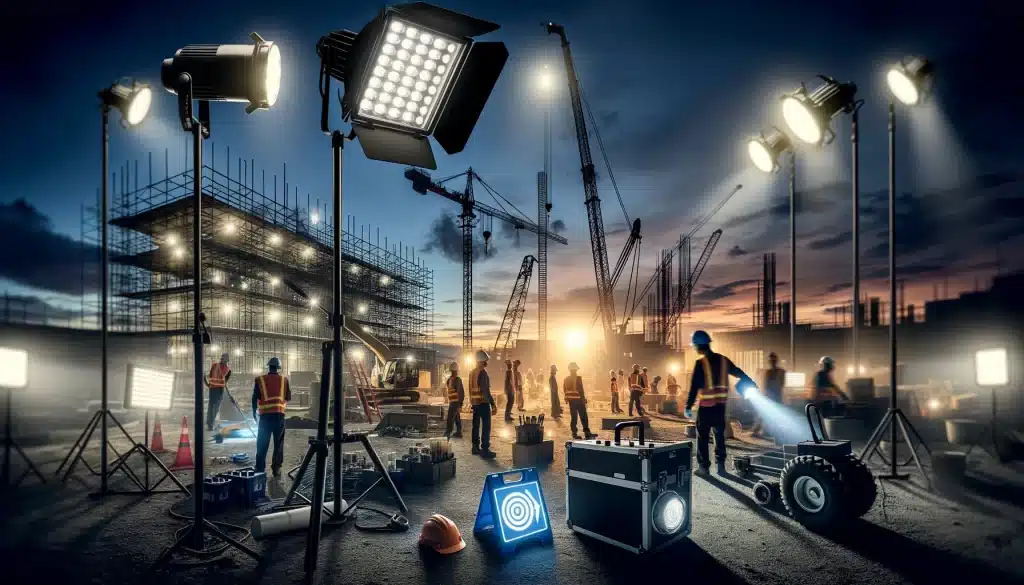
Welcome to Tally Ho Lighting
Welcome to Tally Ho Lighting
In today’s rapidly evolving world, finding sustainable solutions that reduce our environmental impact has become more crucial than ever. While energy efficiency has long been recognized as a key aspect of environmental conservation, it is essential to delve deeper into specific areas that have untapped potential. One such area is lighting innovation. In this article, we will explore the untapped potential of lighting innovation in reducing our environmental impact and uncover how it can revolutionize the way we illuminate our lives.
Before we delve into the potential of lighting innovation, let’s take a moment to understand the environmental impact of traditional lighting methods. Traditional lighting, such as incandescent bulbs and fluorescent tubes, relies on outdated technologies that consume excessive amounts of energy and contribute to greenhouse gas emissions.
Incandescent bulbs, for example, are notorious for their inefficiency. They convert only a small fraction of the energy they consume into visible light, while the rest is wasted as heat. This not only leads to higher energy consumption but also adds strain to cooling systems, further increasing energy demands. Additionally, traditional lighting methods often rely on non-renewable energy sources, further exacerbating their environmental impact.
In recent years, LED (Light Emitting Diode) lighting has emerged as a game-changer in the field of illumination. LED technology offers numerous advantages over traditional lighting methods, making it a prime candidate for reducing our environmental impact.
One of the most significant advantages of LED lighting is its exceptional energy efficiency. LED bulbs can convert a significantly higher percentage of the energy they consume into visible light, resulting in less energy waste. This translates to substantial energy savings and a reduced carbon footprint.
LED bulbs also boast an impressive lifespan compared to their traditional counterparts. While incandescent bulbs typically last around 1,000 hours, LED bulbs can provide illumination for up to 50,000 hours or more. This longevity not only reduces the frequency of bulb replacements but also minimizes the production of waste.
Furthermore, LED bulbs are highly durable and resistant to shock and vibration. This makes them ideal for a variety of applications, from residential lighting to industrial settings.
LED lighting offers unparalleled versatility and customization options. LED bulbs can be manufactured in various shapes and sizes, allowing for seamless integration into any lighting fixture. Additionally, LED lights can emit light in a wide range of colors, enabling the creation of dynamic lighting environments tailored to specific needs.
By embracing LED lighting, we can significantly reduce our environmental impact. LED technology consumes up to 80% less energy than traditional lighting methods, resulting in substantial energy savings and reduced greenhouse gas emissions. Additionally, LED bulbs do not contain hazardous substances like mercury, which is commonly found in fluorescent tubes, making them safer for both the environment and human health.
While LED lighting has already revolutionized the lighting industry, there are numerous innovative lighting solutions on the horizon that can further enhance its environmental benefits. Let’s explore some of these exciting advancements:
Smart lighting systems integrate cutting-edge technology with LED bulbs to create highly efficient and customizable lighting environments. These systems utilize sensors, timers, and advanced control mechanisms to optimize lighting levels based on occupancy, natural light availability, and user preferences. By dynamically adjusting lighting levels, smart lighting systems can further reduce energy consumption and enhance user comfort.
Daylight harvesting is an innovative lighting technique that maximizes the utilization of natural light. By incorporating sensors and adaptive controls, lighting systems can dim or turn off artificial lights when sufficient natural light is available. This not only reduces energy consumption but also provides a more natural and comfortable lighting experience.
Circadian lighting aims to mimic the natural patterns of sunlight to regulate our internal body clocks. By aligning artificial lighting with our circadian rhythms, we can promote better sleep patterns, enhance productivity, and improve overall well-being. This innovative lighting solution holds immense potential for various settings, including residential, commercial, and healthcare environments.
Wireless power transfer technology allows for the transmission of electricity without the need for physical connections. By integrating this technology with lighting systems, we can eliminate the need for traditional power cables, reducing material waste and facilitating easier installation. Wireless power transfer also opens up new possibilities for flexible lighting designs and efficient energy management.
In conclusion, the untapped potential of lighting innovation in reducing our environmental impact is immense. LED lighting has already proven its worth by offering superior energy efficiency, longevity, and versatility. However, with advancements such as smart lighting systems, daylight harvesting, circadian lighting, and wireless power transfer, we can take lighting innovation to new heights.
By embracing these innovative solutions, we can significantly reduce our energy consumption, lower greenhouse gas emissions, and create more sustainable lighting environments. The time has come for us to unlock the untapped potential of lighting innovation and pave the way towards a brighter and greener future.
Share to :

Lighting the way to a brighter tomorrow, one space at a time
Copyright © All Right Reserved